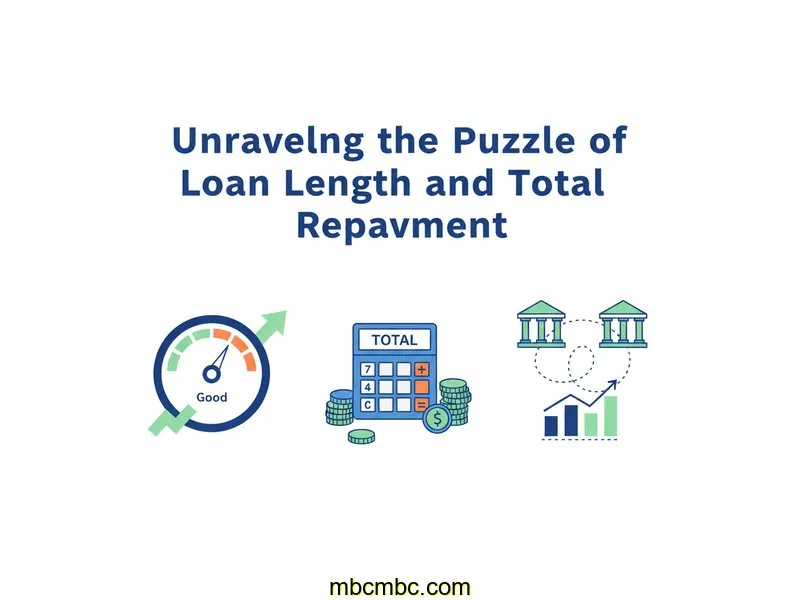
Auto Loan Calculator
Calculate payments over the life of your Loan
Home Blog Privacy Terms About Contact
Calculate payments over the life of your Loan
Home Blog Privacy Terms About ContactPublished on October 17, 2025

My journey into the world of loan math began not with a need, but with a simple conversation. A friend mentioned their recent personal loan, and the monthly payment sounded surprisingly low for the amount they borrowed. I had a rough idea of what a similar amount might look like from my own past explorations, and their number seemed... off. It was significantly lower than what I would have guessed. My first thought was that they must have found an incredible interest rate.
But when I asked, the rate was pretty standard. So how could their payment be so much more manageable? This simple question started a chain reaction in my mind. How can two loans for nearly the same amount and at a similar rate have such different monthly figures? What part of the equation was I missing? It felt like a riddle, and I was determined to understand the mechanics behind the answer.
This led me down a path of exploring online loan calculators, not to shop for a loan, but to simply play with the numbers. I wanted to see the engine, to understand how the inputs—loan amount, interest rate, and loan term—interacted to produce the output. My goal wasn't to make a financial choice, but to achieve calculation literacy. I wanted the numbers to stop being abstract figures on a screen and start telling a coherent story. Just a quick note: this is all about my personal journey to understand how these calculations work. It is absolutely not financial advice.
Armed with my curiosity, I opened a loan calculator. I decided to create a hypothetical scenario to test my understanding. I plugged in a loan amount of $14,850 at an interest rate of 7.2%. My first test was for a term of 48 months, or four years. The calculator quickly returned a monthly payment of approximately $357.87. That seemed reasonable enough and gave me a baseline.
Then, I decided to replicate my friend’s situation. I kept the loan amount and interest rate the same but extended the term to 72 months, or six years. The result was a monthly payment of $256.33. The difference was stark—over $100 less each month. My immediate, gut reaction was, "Wow, the longer term is so much better!" It felt like a magic trick for making something more attainable. The monthly obligation was lower, which my brain instantly translated into "less expensive."
For a while, I was stuck on this single data point. I ran the numbers again and again, tweaking the loan amount slightly, and every time the longer term produced a smaller monthly figure. My mistake was that I had tunnel vision. I was so focused on the affordability of that single monthly payment that I completely ignored the other outputs the calculator was showing me. Fields like "Total Interest Paid" and "Total Repayment" were just noise to me. I thought the monthly payment was the whole story, but I was about to discover it was only the first chapter.
The frustration set in when I tried to understand why. If I'm paying less per month, how does the math work out in the end? I felt like I was missing a fundamental piece of the puzzle. It was a clear sign that I didn't truly understand the relationship between time and interest. I was only seeing one side of the coin, the side that showed a smaller monthly commitment, without flipping it over to see the larger total consequence.

The turning point in my understanding came when I consciously forced myself to look away from the "Monthly Payment" field. My eyes drifted to a different part of the calculator's results page: a field labeled "Total Interest Paid." It was this number that held the entire story I had been missing. It was the key that unlocked the whole concept for me.
I decided to run my two scenarios again, but this time, my focus was entirely on comparing the total interest. The results were immediate and illuminating. For the 48-month loan with the $357.87 monthly payment, the total interest paid was $2,327.76. For the 72-month loan with the seemingly more attractive $256.33 payment, the total interest paid was $3,605.76. Seeing those two numbers side-by-side was my genuine aha moment. The "cheaper" monthly option actually resulted in paying an extra $1,278 in interest over the life of the loan. The illusion was shattered.
My core misunderstanding was that interest isn't a one-time fee. It's a charge that is calculated on the outstanding balance periodically. By stretching the loan over 72 months instead of 48, I was giving the interest 24 extra months to accumulate. Even though I was paying a smaller amount each month, the balance was decreasing more slowly, meaning each month's interest calculation was based on a higher remaining principal for a longer period.
This led me to understand the critical difference between cash flow and total financial impact. A lower monthly payment helps with a monthly budget, making it a cash-flow-friendly option. But it has a direct trade-off: a higher total repayment. I learned that I needed to evaluate both numbers together to get a complete picture of what a loan really entails. One number tells you what you pay now; the other tells you what you pay in total.
To make sure I truly grasped the concept, I ran a third test. I used the same $14,850 loan at 7.2%, but this time I chose a middle ground: a 60-month (five-year) term. Before hitting "calculate," I made a prediction: the monthly payment would be between $256.33 and $357.87, and the total interest would be between $2,327.76 and $3,605.76. Sure enough, the calculator showed a monthly payment of about $294.61 and total interest of $2,826.60. Seeing my prediction confirmed solidified my understanding. I could now see the clear, mathematical relationship between the loan's duration and its total interest.
This journey, which started with a simple question about a friend's loan, ended up teaching me some fundamental lessons about how loan calculations work. My perspective shifted from just looking at a single number to understanding the interplay between several variables. It was an empowering feeling to finally see the full mechanism at work.
The term, or duration, determines the number of times interest is calculated on your remaining balance. A longer term, like 72 months versus 48, means you have 24 additional periods where interest is charged. Because your lower payments reduce the principal more slowly, the balance on which interest is calculated remains higher for longer, leading to a greater accumulation of total interest.
This is due to how amortization works. In the early stages of any loan, the principal balance is at its highest. Since the interest charge for a given month is based on that high balance, a larger portion of your fixed monthly payment is needed to cover that interest. As you pay down the principal over time, the interest portion of each payment shrinks, and the principal portion grows. This effect is more pronounced on longer loans.
Absolutely. Most good online loan calculators include an "Amortization Schedule" feature. This generates a detailed table showing every single payment over the life of the loan. It breaks down each payment into how much goes toward interest and how much goes toward principal, and it shows the remaining balance after each payment. This is an incredible tool for visualizing the concepts I learned.
By focusing exclusively on the lowest monthly payment, you are missing the context of the total financial commitment. You might secure a payment that fits your monthly budget but inadvertently agree to pay hundreds or even thousands more in total interest over the loan's lifetime. It's crucial to look at both the monthly figure and the total repayment figure to make an informed interpretation of the numbers.
Looking back, my initial confusion seems so simple, but it's a common trap to fall into. We're conditioned to think about monthly budgets, so a lower monthly payment naturally feels like a win. My biggest takeaway from this exploration is the importance of looking beyond that one number. The "Total Interest Paid" field on a loan calculator tells a powerful story, and learning to read it gave me a much deeper and more complete understanding of how loan math truly functions.
It was a rewarding process to move from being confused by a friend's numbers to being able to predict how changes in a loan's structure would affect the outcome. It's a reminder that these concepts aren't magic; they're just math. Taking the time to play with the tools and ask "why" can transform intimidating financial topics into understandable processes. It's about building confidence not through advice, but through comprehension.
This article is about understanding calculations and using tools. For financial decisions, always consult a qualified financial professional.
Disclaimer: This article documents my personal journey learning about loan calculations and how to use financial calculators. This is educational content about understanding math and using tools—not financial advice. Actual loan terms, rates, and costs vary based on individual circumstances, creditworthiness, and lender policies. Calculator results are estimates for educational purposes. Always verify calculations with your lender and consult a qualified financial advisor before making any financial decisions.
